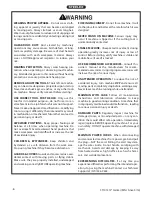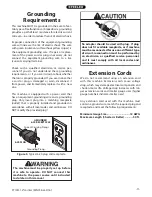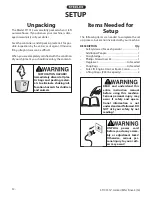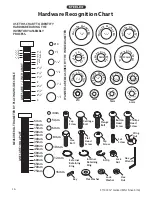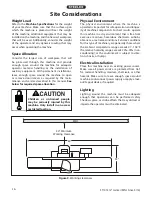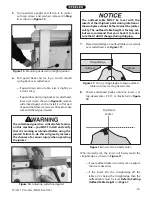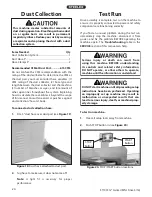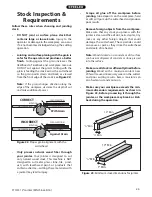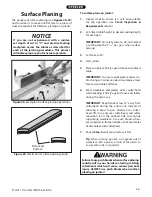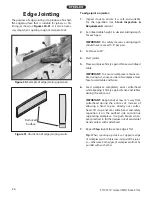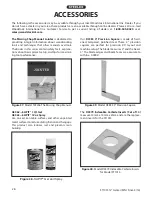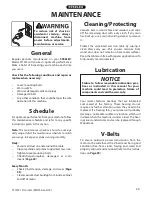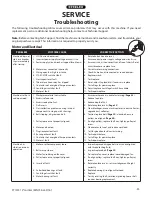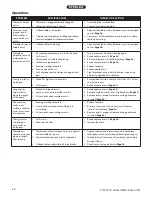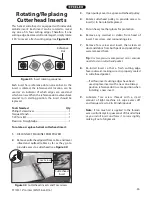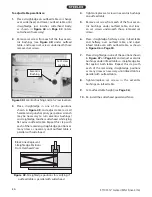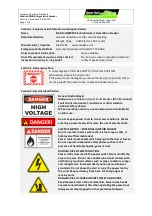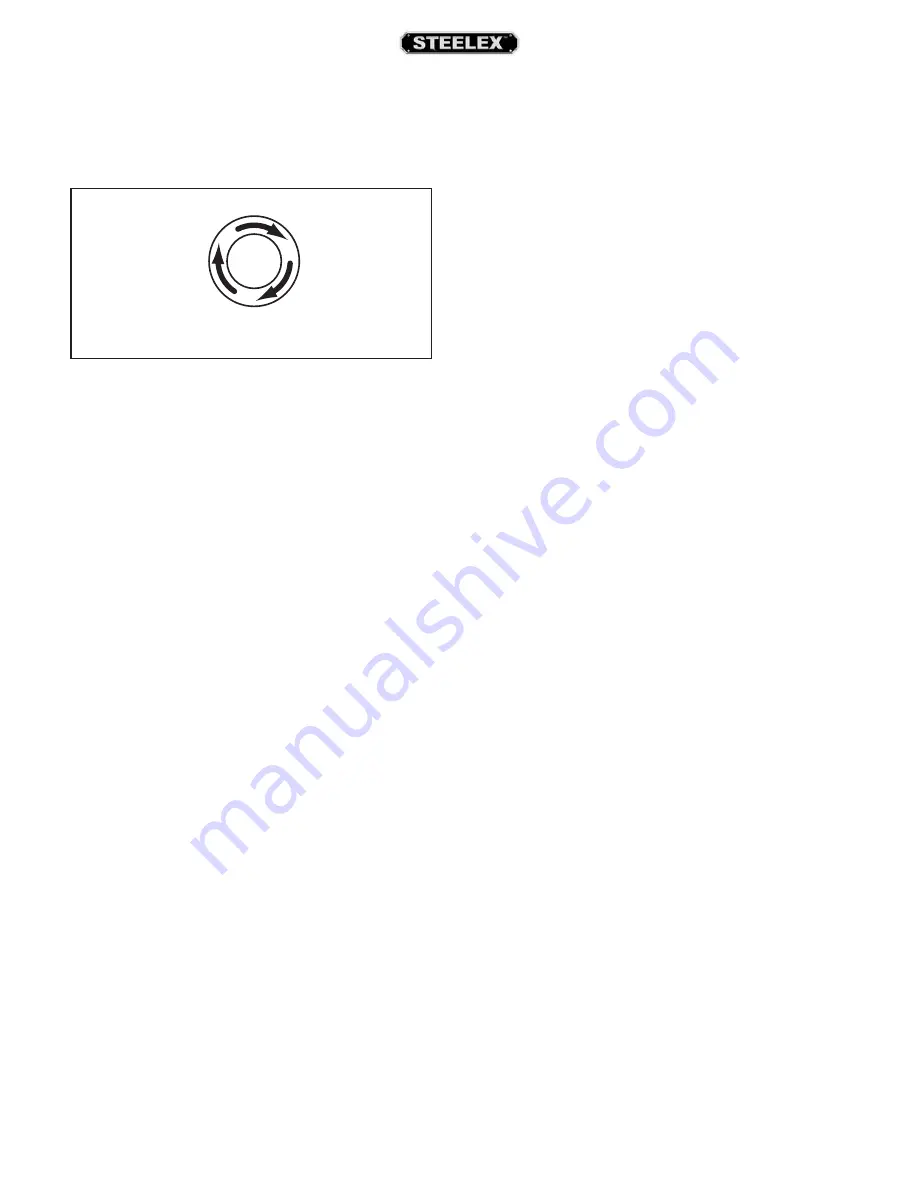
ST1013 12" Jointer (Mfd. Since 3/16)
-21-
STOP Button
TWIST
Figure 21. Resetting the STOP button.
3. Connect machine to power supply.
4. Twist STOP button clockwise until it pops out
(see Figure 21). This resets switch so machine
will start.
5. Push START button to start machine. A correctly
operating machine runs smoothly with little or
no vibration or rubbing noises.
6. Press STOP button to turn machine OFF.
7. WITHOUT resetting STOP button, press START
button. Machine should not start.
— If machine
does not
start, the STOP but-
ton safety feature is working correctly.
Congratulations! The Test Run is complete.
— If machine
does
start (with STOP button
pushed in), immediately disconnect power
to machine. The STOP button safety feature is
not working correctly. This safety feature must
work properly before proceeding with regular
operations. Call Tech Support for help.
For your convenience, the adjustments listed below
have been performed at the factory. However,
because of the many variables involved with ship-
ping, it is possible some of these adjustments may
have changed during transportation and handling.
Before making any service adjustments, we recom-
mend operating the machine on a trial basis. First,
check the cutting results. If the cutting results are
satisfactory, no further adjustments are necessary.
Factory adjustments that should be verified:
•
Table Parallelism (refer to Page 33).
• Depth-of-Cut Scale Calibration (refer to Page
37).
•
Fence Stop Accuracy (refer to Page 38).
Recommended
Adjustments
Tighten Belt
The final step in the setup process must be done
after the first 16 hours of operation. During this time,
the belt will stretch and seat into the pulley grooves.
After this time, you must re-tension the belt to avoid
slippage and burn out, and to ensure optimal power
transmision from the motor to the cutterhead. Refer
to Page 39 when you are ready to perform this
important adjustment.
Note:
Pulleys and belt can get hot. This is a nor-
mal condition. Allow them to cool before making
adjustments.
A small amount of black belt dust at the bottom
of the belt housing is normal during the life of
the machine and does not indicate a problem
with the machine or belt.


